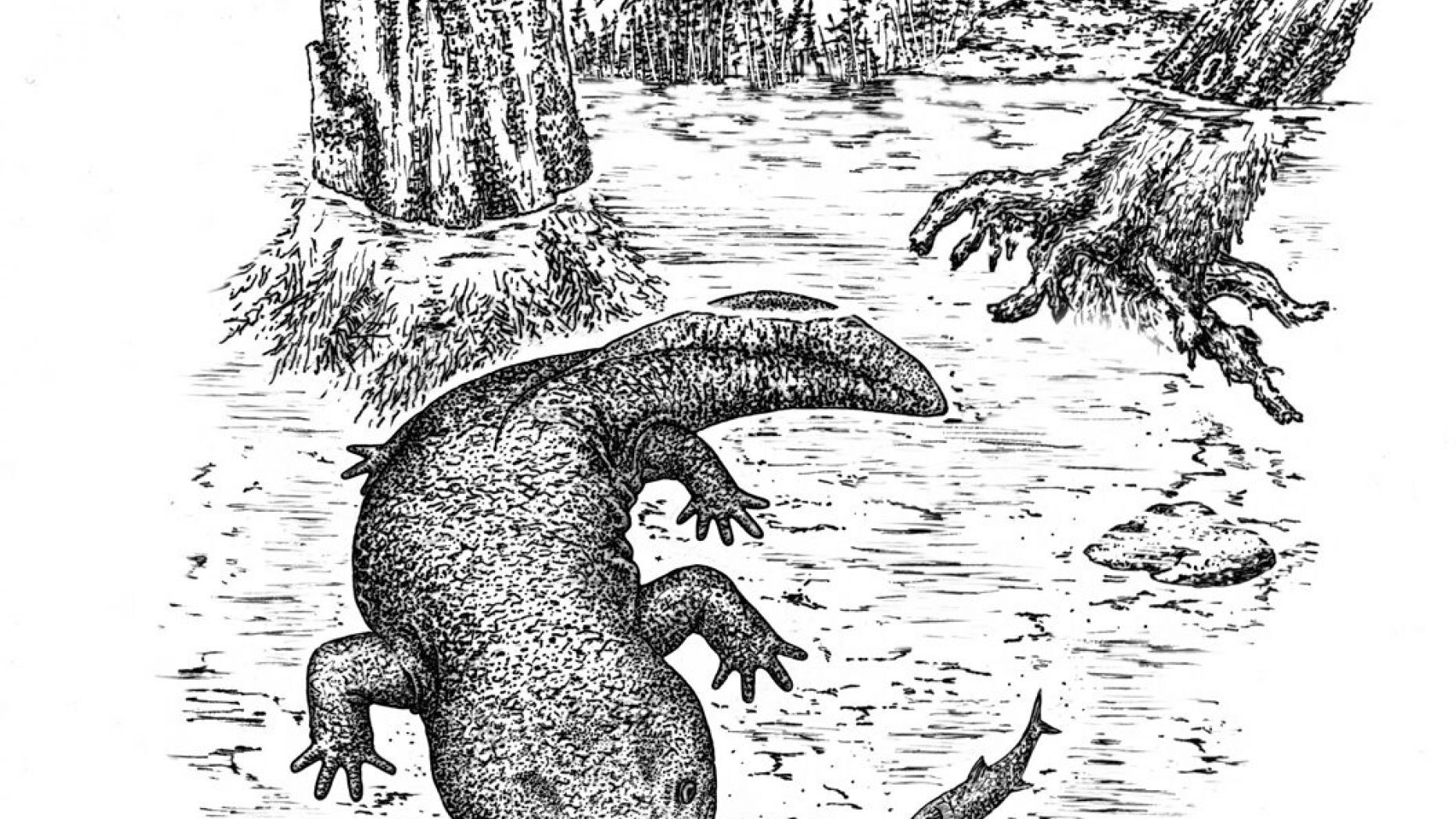World’s oldest salamander discovered in Siberia

Scientists have discovered the world’s oldest salamander, a 167-million-year-old specimen found in Siberia.
Four fossilized backbones of the ancient salamander were unearthed, including the atlas at the top of the spine that allows the head to nod. The fossils were found at an animal graveyard called Berezovsky quarry, where other prehistoric creatures, including dinosaurs, reptiles, fish and mammals have been found.
Known as Egoria Malashichev, the 8-inch salamander likely swam with other sea creatures such as massive sharks, giant sea lizards and enormous scorpions, researchers said.
A group of Russian and German palaeontologists have described a previously unknown genus and species of prehistoric salamanders. The new amphibian is named Egoria malashichevi — in honor of Yegor Malashichev a talented scientist and associate professor of the Department of Vertebrate Zoology at St Petersburg University, who passed away at the end of 2018. (Credit: SWNS)
A group of Russian and German palaeontologists have described a previously unknown genus and species of prehistoric salamanders. The new amphibian is named Egoria malashichevi — in honor of Yegor Malashichev a talented scientist and associate professor of the Department of Vertebrate Zoology at St Petersburg University, who passed away at the end of 2018. (Credit: SWNS)
10M-YEAR-OLD TURTLE HAD 8-FOOT-LONG SHELL AND WEIGHED NEARLY 2,500 POUNDS, STUDY SAYS
“Salamanders first appear in the fossil records in the Middle Jurassic – including representatives of both the present-day salamander families and the most primitive ones,” the study’s lead author, Pavel Skutschas, said in a statement. “When they had just appeared, salamanders made efforts to occupy different ecological niches. Thus, the stem salamanders filled the niche of large water bodies – while those close to the present-day salamanders found their niche in small water bodies.”
Skutschas continued: “As for the newly discovered salamander, it occupied a middle position, although morphologically, it is closer to the primitive.”
The discovery of the atlas was exceptionally important, Skutschas added, noting it allows for the identification of a new species because of the unique information provided.
It would have swum with ocean beasts of the Jurassic era such as monster sharks and giant sea lizards and scorpions. (Credit: SWNS)
It would have swum with ocean beasts of the Jurassic era such as monster sharks and giant sea lizards and scorpions. (Credit: SWNS)
‘BIZARRE’ TURTLE MANAGED TO SURVIVE ASTEROID THAT WIPED OUT DINOSAURS
Other salamanders have also been discovered at the location, including a 2-foot-long version known as Urupia monstrosa that lived approximately 165 million years ago.
Skutschas pointed out that E. Malashichev and U. monstrosa may be representative of the same genera, but further research is needed.
“In the coming spring, our colleagues from England will come to St Petersburg to study our research materials,” Skutschas said. “We may discover that Urupia and Egoria used to have a very wide habitat – extending across Europe and Asia.”



 Creators of mankind
Creators of mankind Description of “Tall white aliens”
Description of “Tall white aliens” Where they came from?
Where they came from? About hostile civilizations
About hostile civilizations The war for the Earth
The war for the Earth “Tall white aliens” about eternal life
“Tall white aliens” about eternal life Video: “Nordic aliens”
Video: “Nordic aliens” Aliens
Aliens Alien encounters
Alien encounters The aliens base
The aliens base UFO
UFO Technology UFO
Technology UFO Underground civilization
Underground civilization Ancient alien artifacts
Ancient alien artifacts Military and UFO
Military and UFO Mysteries and hypotheses
Mysteries and hypotheses Scientific facts
Scientific facts


















